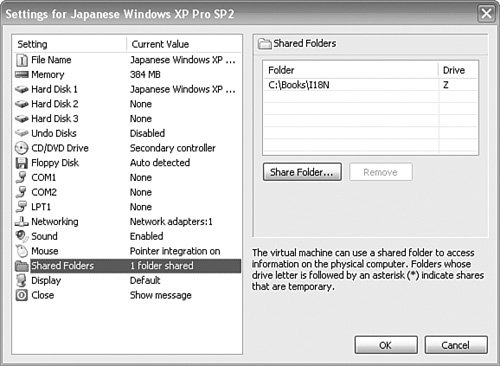Virtual Machines
| At some point during your application's testing phase, you will need to run your application on the target environment. This might be a different version of Windows to the development platform, and/or it might be a different language of Windows than the developer's language. It is not sufficient to test an application by simply switching the application's culture to the target culture. Throughout this book, you will find numerous differences that are a consequence of the version of Windows or the language of Windows; consequently, you must test the application using the target environment. The traditional approach to this problem is to install the target environment on a new machine. This is as close to an absolute solution as you can get, but it is costly in terms of hardware if you are testing multiple versions of Windows, each with its own language. A simpler solution is to use virtual machine software, such as Microsoft's Virtual Server, Microsoft's Virtual PC, or VMWare's VMWare Server and WorkStation. These software packages create "virtual machines" that run as guests within a host operating system. The guest operating systems can be any operating system, including Windows, Linux (for testing Mono .NET applications), and DOS. Figure 2.1 shows Virtual PC hosting the Japanese version of Windows XP Professional Service Pack 2, testing a translated .NET Windows Forms application. Figure 2.1. Virtual PC Hosting Japanese Version of Windows XP Professional
|
EAN: 2147483647
Pages: 213
